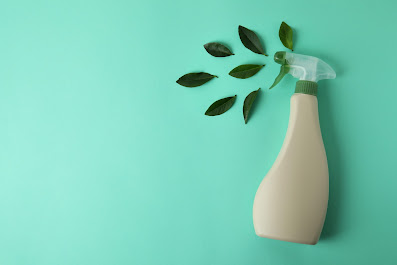Why Switch to Sustainable Home Cleaning? Your Eco-Friendly Guide
Introduction
In today's world, many of us are looking for ways to live more consciously and reduce our environmental impact. One significant area where we can make a difference is right inside our homes – specifically, with the cleaning products we use. Traditional cleaners often contain harsh chemicals that can harm the environment and potentially affect our health. Switching to sustainable home cleaning solutions is a powerful step towards a greener lifestyle. But what does that involve, and why is it so important? This guide breaks it down.
What Are Sustainable Home Cleaning Solutions?
Sustainable cleaning involves using products and methods that minimize harm to the environment and human health. This typically means:
Biodegradable Ingredients: Products break down naturally without polluting waterways.
Non-Toxic Formulas: Free from harsh chemicals like ammonia, chlorine bleach, phthalates, and synthetic fragrances that can cause respiratory issues or skin irritation.
Plant-Derived Ingredients: Utilizing the cleaning power of plants instead of petroleum-based chemicals.
Reduced & Recycled Packaging: Using minimal packaging, often made from recycled materials, or offering refillable options.
Cruelty-Free Practices: Products not tested on animals.
DIY Options: Utilizing simple, common household ingredients like vinegar, baking soda, and lemon juice.
Key Benefits of Making the Switch
Protecting the Environment: Conventional cleaners wash down drains, potentially polluting rivers and oceans, harming aquatic life. Their production can also be resource-intensive. Sustainable options are designed to minimize this ecological footprint.
Improving Indoor Air Quality: Harsh chemicals evaporate into the air we breathe. Using non-toxic cleaners can significantly reduce indoor air pollution, which is especially beneficial for those with allergies, asthma, or chemical sensitivities.
Safer for Families and Pets: Reducing exposure to potentially harmful residues on surfaces is safer for everyone in the household, including children and pets who often come into close contact with floors and other surfaces.
Often More Cost-Effective: While some eco-friendly brands might seem pricier upfront, many concentrate formulas last longer. Furthermore, DIY solutions using vinegar and baking soda are incredibly inexpensive.
Supporting Ethical Brands: Choosing sustainable products often means supporting companies committed to ethical sourcing, fair labor practices, and environmental responsibility.
Simple Steps to Get Started
Read Labels: Start paying attention to the ingredients in your current cleaners. Look for certifications like EPA Safer Choice or EWG Verified.
Start Small: You don't need to replace everything at once. As you run out of a conventional cleaner, replace it with a sustainable alternative. An all-purpose cleaner is a great starting point.
Explore DIY: Search for simple recipes using vinegar (great for glass and surfaces), baking soda (a gentle abrasive), and castile soap.
Choose Reusable Tools: Opt for microfiber cloths, washable mop heads, and reusable spray bottles instead of disposable wipes and paper towels.
Conclusion
Switching to sustainable home cleaning isn't just a trend; it's a responsible choice for our planet and our well-being. By understanding the benefits and taking small, manageable steps, you can easily transition to greener cleaning habits. It's about making informed, better choices for a cleaner home and planet.



Comments
Post a Comment